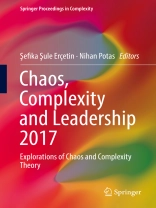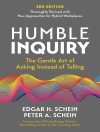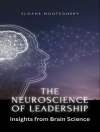The proceedings of the 2017 Symposium on Chaos, Complexity and Leadership illuminate current research results and academic work from the fields of physics, mathematics, education, economics, as well as management and social sciences. The text explores chaotic and complex systems, as well as chaos and complexity theory in view of their applicability to management and leadership.
This proceedings explores non-linearity as well as data-modelling and simulation in order to uncover new approaches and perspectives. Effort will not be spared in bringing theory into practice while exploring leadership and management-laden concepts.
This book will cover the analysis of different chaotic developments from different fields within the concepts of chaos and complexity theory. Researchers and students in the field will find answers to questions surrounding these intertwined and compelling fields.
Inhoudsopgave
Chapter1: Complexity Theory as a New Lens in IR: System and Change.- Chapter2: The Chaotic Awareness Reality and the Complexity in Turkish Novels.- Chapter3: An Assessment on Positive Reflections of the Restructuring of Public Banks after February 2001 Financial Crisis in Turkey and 2008 Global Crisis to Turkish Finance Sector.- Chapter4: The Relevance of Organizational Intelligence.- Chapter5: The Views of Trainee Substitute Teachers on Organizational Socialization (Istanbul Sample).- Chapter6: Prerequisites to getting rid of Chaos in Collaborative Learning Classroom: Addressing the Chaos Theory.- Chapter7: The Concept of Self-Organized Criticality: The Case Study of the Arab Uprising.- Chapter8: Migration Process and Its Effects on Mental Health.- Chapter9: Exploratory Factor Analysis in the Measurement of the four dimensions of sustainable leadership construct.- Chapter10: A Comparative Analysis of the Fractal Leadership Practices of Female and Male School Principals.- Chapter11: Veteran Principals’ Views over the Effect of Positive Discipline on Classroom Management for Novice Teachers.- Chapter12: Evaluation of Teaching Practice Performance of Students of Secondary Mathematics Education by Fuzzy Logic.- Chapter13: Revisiting the environmental Kuznets Curve Hypothesis for Turkey.- Chapter14: Complexity in Abstract Poetry.- Chapter15: We Need Resilient School Leaders in the face of Chaos and Complexity.- Chapter16: Supervision of Turkish Education System and Living Chaotic Situations.- Chapter17: Inter-Organizational Symbiosis Scale (Inorsyms).- Chapter18: Game Theory and John Forbes Nash in the History of Economic Thought.- Chapter19: The Relationship between the Mathematical Thinking Levels and Conflict Management Strategies of School Directors.- Chapter20: Complexity in Management: Problems and Strategies.- Chapter21: Al-Qaeda: A Model For ‘Sustainable Disorder’?.- Chapter22: Examination of Working Women’s Self-Esteem.- Chapter23: Discussion on Erçetin’s Quantum Leadership Paradigm in terms of the School or Classroom Management.- Chapter24: Relationship between Quantum Leadership Behavior of School Principals and Levels of Creativity of Teachers.- Chapter25: Scale Construction for Revealing the Happiness Perception of Secondary School Students.- Chapter26: Teacher Views on Increasing the Quality of Life in School.- Chapter27: Development Plans In Turkey In The Context of Life Long Learning (1963-2018).- Chapter28: Palestinian Postgraduate Students in Turkey: Faced Challenges, Provided Supports and Proposed Solutions.- Chapter29: Consumer Buying Behavior and Perception towards Shopping Malls with Special Reference to the City of Kolkata, West Bengal, India.- Chapter30: Assessment of School Administrators’ Views Towards Social Media.- Chapter31: How do Different Groups Conceive Primary School English Language Education? A Sample of Cono Tribe.- Chapter32: Organizational Trust in Schools: A Critical Review of Empirical Research in Turkey.- Chapter33: Teachers’ and Educational Administrators’ Opinions about Adolescents’ Cyber Bullying/Cyber Victimization Experiences.- Chapter34: A Study on Validity and Reliability of Teacher Efficacy Scale.- Chapter35: Unmasking the ideological stance of political leaders by Critical Discourse Analysis: Ahmadinejad as a case study.- Chapter36: Complex Situations that University Students Came Across in University Experience and Suggested Solutions.- Chapter37: Investigation of Organizational Intelligence Level of Schools According to Teachers’ Opinion.- Chapter38: The Views of the Teachers on Their Identification with the Schools They Work.- Chapter39: Being A Refugee University Student in Turkey From The Perspective of Syrian Female Students.- Chapter40: Syrian Refugees: The Demographic Impacts on the Republic of Turkey and Reflections on the Social Studies Course Books.- Chapter41: Anger Management at the Edge of Chaos.- Chapter42: Perceived Uncertainty: A Study of Validity and Reliability.- Chapter43: Is There Holistic Relationship between Simulacra and Zuhur in Media?.- Chapter44: An Epistemic Structuring in the Context of Complexity Science and Chaotic Awareness Theory.- Chapter45: An Analysis of Variables Predicting Attitudes of High School Students towards Teaching Profession: A Case Study.- Chapter46: The Determination of the Turkish Perception of Graduate Students Through the Method of Metaphor.- Chapter47: Investigation of the Critical Leadership Scores of Candidate Teachers by Parental Education Levels.- Chapter48: The Leadership Types which the Ombudsmen can Utilize at the Ombudsman Institution.- Chapter49: Investigating University Preparatory Students’ Level of Learned Helplessness in Learning English in terms of Different Variables.- Chapter50: Metaphorical Perceptions of the School Directors and Teachers Related to School Principalship.- Chapter51: School Dropout Problems in Graduate Education: Causes and Possible Solution Suggestions.- Chapter52: School Dropout Problems in Graduate Education: Causes and Possible.- Chapter53: Examining the Relationship between School Culture and Leadership Behaviors of Teachers.- Chapter54: Educational Organizations in the Light of Change and Suggestions for Adaptation to Change.- Chapter55: The Commodification of Religion From Modern Society to Postmodern Consumption Culture.












